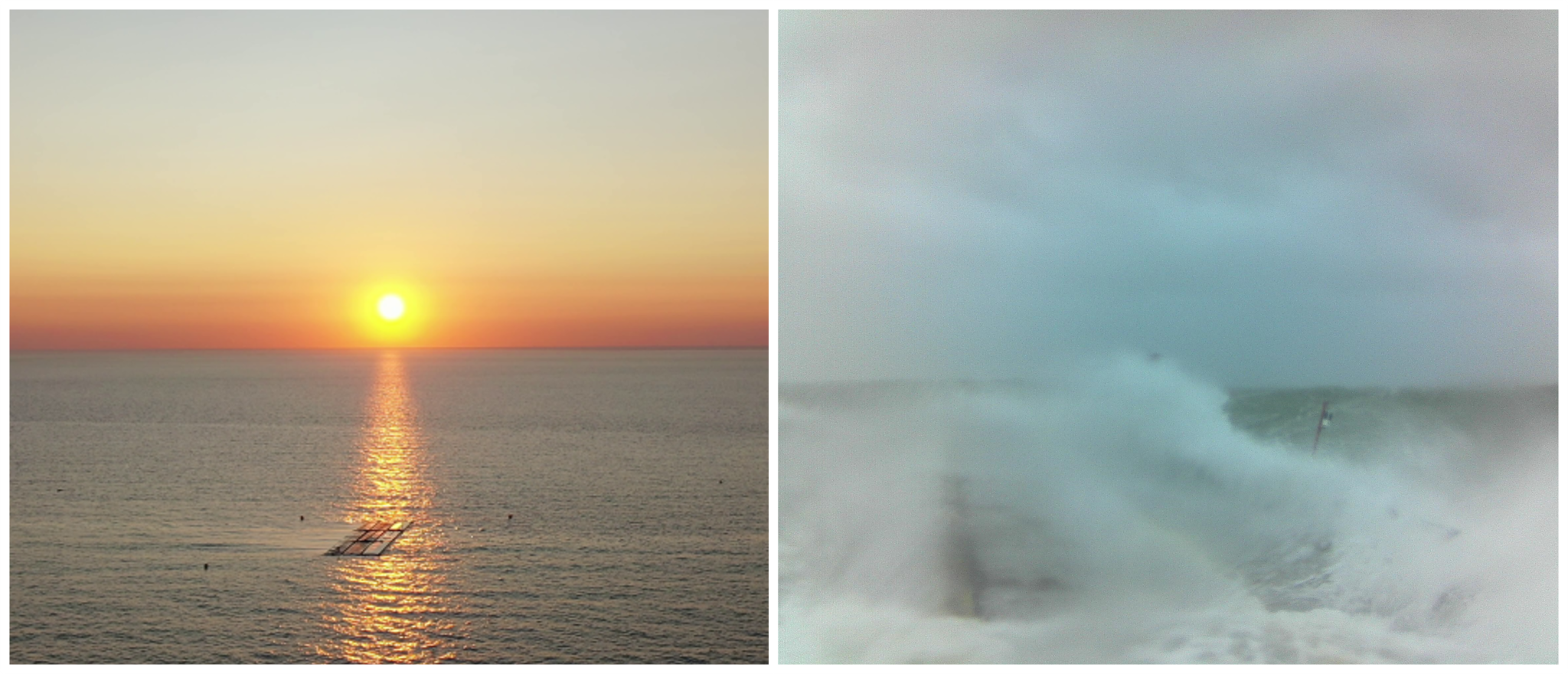Solar panels at sea, the solution to our energy problems?
The Dutch part of the North Sea is one and a half times the size of the Netherlands. We currently use it almost exclusively for fishing, shipping and the controversial wind farms. Can solar panels at sea solve our energy problems?
Contents
Floating solar panels, not so crazy after all
Many conservative people think floating solar panels at sea are an absurd idea. Construction costs are higher at sea than on land. Just like with wind turbines, long cables must also be laid to transport the electricity produced to the mainland. Maintenance is difficult, and it often gets quite spooky at sea. Solar panels obscure light, which is bad for marine life. The North Sea is our largest nature reserve, isn’t it?
Nevertheless, solar panels at sea have some major advantages. There is much more space at sea than on the crammed Dutch mainland. It is sunnier at sea. And the climate is also more favourable: the sea dampens large temperature fluctuations.
Solar panels cooled at sea
One of the most important advantages is that floating solar panels at sea are cooled by the sea water. Every degree of temperature increase reduces the yield of solar panels by almost half a percent. On a hot summer day, the temperature of a solar panel can sometimes rise to around 65 degrees, resulting in a much lower yield.
In the North Sea, the water temperatures rarely rise far above 19 degrees. At the end of winter, it even drops below five degrees. The result is that, according to calculations by Utrecht University, the yields of solar panels at sea are up to 13% higher.
Experimenting with solar panels at sea
Floating solar panels have been around for some time in China and Singapore, but they float on freshwater reservoirs. The Dutch startup Oceans of Energy has been the first to experiment with floating solar panels since 2020. According to the company, their test rig has survived two years of pretty nasty weather, including storms with ten-meter high waves.
In a new project, the solar panels at sea are combined with wind turbines. There is already an electricity network, with which the electricity is transported from the wind farm. In this way, the costs of infrastructure remain limited. The aim of the startup is to reach a total capacity of 1 megawatt. This is possible with several thousand floating solar panels. Plans for the next phase are even more ambitious. The aim is to place squares with floating solar panels between the windmills. These will generate five times as much energy as the windmills themselves.
Government plans for huge floating solar farm
New government plans go much further. Installing these floating solar farms in all wind farms will increase the total amount of energy generated fivefold. Numbers are doing the rounds of several hundred million floating solar panels, which together have to generate 45 terawatts of power. This means several hundred square kilometers of solar panels at sea. This seems like a huge number, but it is less than one percent of the total area of the Dutch part of the North Sea: 60,000 square kilometers.
Personally, I find all this excitement about the warming climate rather exaggerated. It is still colder than a few million years ago, when forests grew in Greenland. But this does have a huge advantage: it will make the Netherlands energy independent. Last autumn and winter we noticed how much misery it caused to be dependent on foreign countries.



